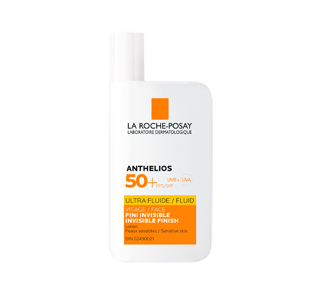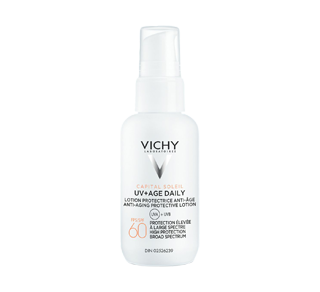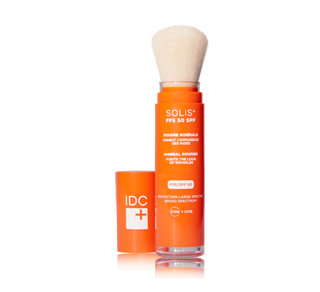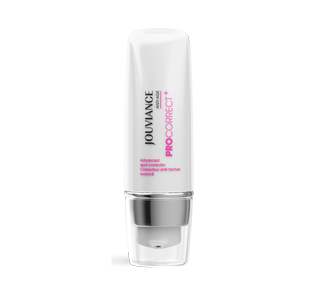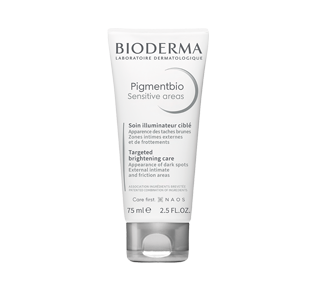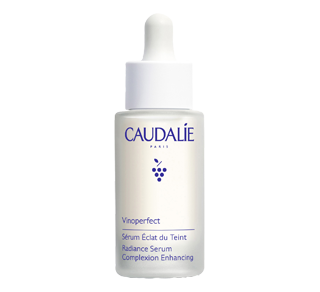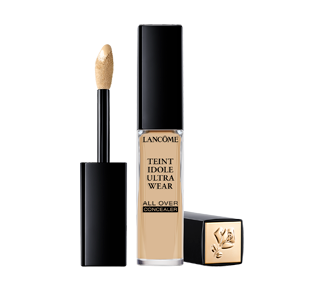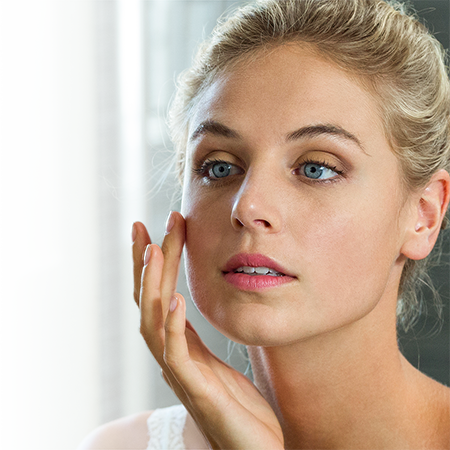Where do those little brown spots that sneak up on your face come from? And above all, how do you get rid of them? Here is everything you need to know about this condition!
What is a brown spot?
A brown spot (or hyperpigmentation) is an area of skin where an excessive amount of melanin—the natural pigment responsible for skin colouration—has accumulated.
Usually occurring around the age of 40, and sometimes earlier, hyperpigmentation manifests as small more or less dark brown spots, which usually occur on the areas of the body most exposed to the sun, such as the face, hands, neck and décolleté. While harmless, brown spots can still be aesthetically unpleasant.
What causes brown spots (hyperpigmentation of the skin)?
There are several reasons why brown spots may appear on your skin:
- Overexposure to the sun's UV rays: This is the main cause of hyperpigmentation, especially without adequate sun protection.
- Blue light from screens: A recent discovery shows that blue light from screens also stimulates melanin production, potentially causing brown spots.
- Skin aging: With age, the skin can lose its ability to regulate melanin properly.
- Hormonal fluctuations, especially those caused by pregnancy, menopause or contraceptive use, may also be to blame.
- Inflammations or skin wounds caused by acne, burns or insect bites can also leave brown spots.
- Certain medications and cosmetics can sensitize the skin to the sun and promote hyperpigmentation.
The good news is that it is possible to prevent the appearance of these marks or make them less visible without going to the dermatologist!
Note: Brown spots caused by pregnancy or taking the wrong dose of contraceptive pills usually disappear when hormone levels stabilize.
Brown spots on the skin: When should you worry?
While the vast majority of brown spots are benign, some may require medical evaluation to rule out the risk of skin cancer.
Consult a health care professional if:
- The spot changes appearance rapidly;
- The spot has irregular edges;
- The spot is uneven in colour;
- The spot bleeds;
- The spot itches;
- The spot is growing in an unusual way.
How to prevent brown spots?
The best way to prevent the appearance of brown spots is to avoid exposure to the sun or sources of blue light. But it's hard to escape the rays all year round! That’s why it is important to protect your epidermis with a broad-spectrum sunscreen, with an SPF of at least 30. Also think about pairing it with a blue light care product—there are more and more on the market!
Keep in mind that each exposure to the sun may increase the number of brown spots on the skin and make existing ones even darker. That's why it is essential to apply daily protection, whatever the time of year.
Brown spots on the skin: When should you worry?
How to reduce brown spots?
Salon treatments are not the only way to reduce the appearance of dark spots over the long term: some pharmacy products can also do the trick! Composed of depigmenting and lightening active ingredients, they act on melanin, they promote the exfoliation of the dead cells on the surface of the skin and fade the spots.
The wide range of creams, cleansers, serums, lotions and spot treatments available provides many opportunities to create a beauty routine that specifically or partially targets hyperpigmentation. Ask our dermocosmetics consultants for advice on the products that best suit your needs.
Note:
Be patient! You may have to persevere for several weeks before you see the first results of your anti-brown spot routine.
Serums and anti-spot products to consider
How do I get rid of brown spots?
With the right products and a little skill, brown spots can be made virtually invisible. For better coverage, choose correctors with a high pigment concentration.
What shade should you choose for your brown spot corrector?
Choose a corrector a shade lighter than your foundation if the blemish is slight. For more pronounced spots, choose a colour corrector with a complementary shade to the blemish. The rule is that two opposite colours cancel each other out when superimposed. When in doubt, refer to the chromatic circle or simply ask a cosmetician for advice.
Keep in mind that:
- Green neutralizes red;
- Yellow conceals brown or purple;
- Orange hides blue;
- Pink covers up brown;
A 3-step treatment routine for brown spots on the face
- On a clean and moisturized face, cover the spots and blemishes by dabbing the corrector directly on the spots using a small brush for more precision. Once applied, lightly tap the spot with a sponge or brush to blend the product.
- They apply a fluid or compact foundation all over the face, which will have a unifying effect. Apply the product with a sponge, gently patting the skin of the face for best results and to avoid removing the corrector.
Finish your anti-spot routine with a translucent powder to set your makeup.
A few corrective products to help you
Have you considered a peeling?
Certain peeling products available in pharmacies can help reduce the appearance of brown spots. Formulated with exfoliants such as alpha-hydroxy acids (AHA), beta-hydroxy acids (BHA) or poly-hydroxy acids (PHA), these products help eliminate dead cells from the skin's surface and stimulate cell renewal.
A good skin peeling routine, performed once or twice a week, helps smooth skin texture, revive radiance and gradually reduce the appearance of spots.
Note:
Be sure to apply a good sunscreen after your peeling routine, as your skin will temporarily be more sensitive to the sun's UV rays.
Get the best advice and products for brown spots
Consult our team of cosmeticians at a Jean Coutu near you to get the best anti-spot solutions for your needs!

